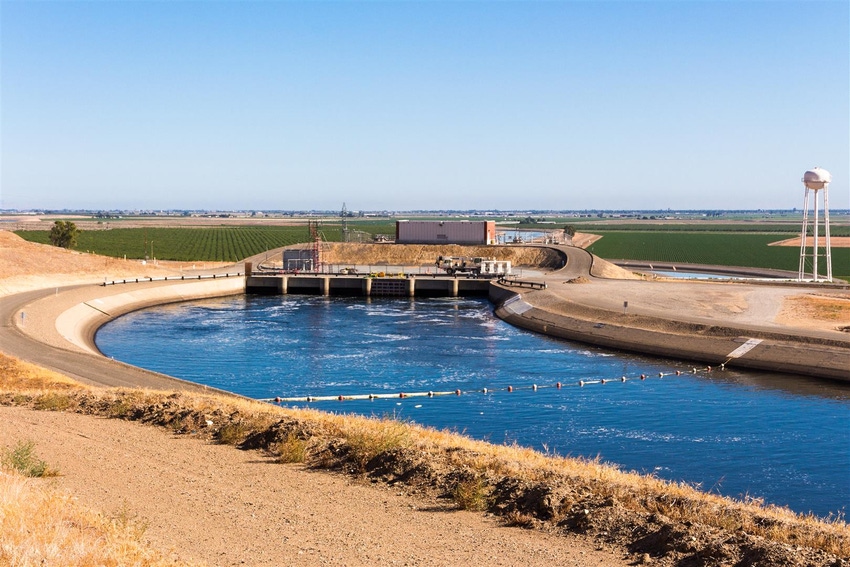
Two major California canals – the California Aqueduct and the Delta-Mendota Canal – have been significantly impacted by subsidence which the state says is caused by groundwater pumping in the Central Valley.
Land subsidence happens, according to the U.S. Geological Survey, when large amounts of groundwater have been withdrawn from certain kinds of rocks, such as fine-grained sediments. The water is partially responsible for holding the ground up. With the absence of that water the ground sinks. One of the concerns of this phenomenon is that once an aquifer collapses in upon itself it can no longer refill.
California officials are using a new set of NASA maps to chronicle subsidence in the San Joaquin Valley and further link agricultural pumping with the phenomenon that continues to plague certain regions in the Central Valley, causing in one case, sections of the California Aqueduct and Delta-Mendota Canal to sink by about two feet.
NASA prepared the maps for the California Department of Water Resources (DWR). The maps show subsidence in certain areas of the Valley continue, particularly near Chowchilla (Madera County) and Corcoran (Kings County). A third area of subsidence near Tranquillity in Fresno County was also said to have intensified within the past year.
NASA also mapped the California Aqueduct, the main artery supplying 25 million Californians and about one million acres of farmland with water from the State Water Project. Those maps show that sections of the aqueduct have sunk so much that the canal has a carrying capacity 20 percent less than its design capacity.
That discovery poses a considerable issue for State Water Project (SWP) contractors in Kern County and points south. According to DWR, if its SWP allotment exceeds 85 percent, water deliveries to districts in those regions could be hampered because of the limited carrying capacity of the canal.
DWR is conducting its own study of the impacts of subsidence along the 444-mile long aqueduct and other SWP features. That study, along with information already at hand, could lead to significant impacts to water users as state officials are said to be investigating all legal options available to protect state infrastructure.
Officials are also looking into other actions related to implementation of the Sustainable Groundwater Management Act (SGMA) that could reduce long-term subsidence risk. Further emphasis on this could be added to future implementation of SGMA.
The SWP is not the only water purveyor with issues. The federal Central Valley Project (CVP) may have similar delivery issues as portions of the Delta-Mendota Canal have subsided up to 22 inches. The CVP delivers water to about three million acres of farmland and more than two million residents.
A report from NASA’s Jet Propulsion Laboratory suggests that groundwater pumping is to blame for decades of subsidence in the San Joaquin Valley. Mapping technology with sensitivity to fractions of an inch shows the areas where this problem is worse, including areas in Tulare, Kings, Fresno and Madera counties.
DWR says subsidence due to groundwater extraction in the Valley was observed as early as the 1920s. The California Aqueduct was subsequently built to account for subsidence, but it was also built to reduce the phenomenon of subsidence by allowing farmers to access higher-quality surface water and reduce their reliance upon groundwater.
Since construction of the California Aqueduct repairs have included raising canal linings, bridges and water control structures on the aqueduct and on the Delta-Mendota and Friant-Kern canals.
About the Author(s)
You May Also Like






